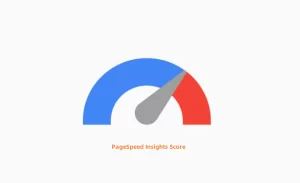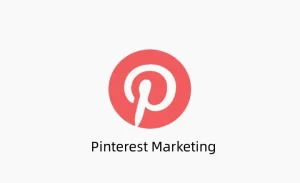In today’s fast-paced and highly competitive business landscape, marketers are constantly seeking strategies that generate instant results and provide a high return on investment (ROI). One powerful approach that has gained significant traction is direct response marketing.
Unlike traditional marketing, which focuses on long-term brand awareness, direct response marketing is designed to elicit an immediate response from prospects, driving specific actions and generating leads quickly.

In this complete guide, we will delve into the key elements, benefits, best practices, and effective channels of direct response marketing.
What is Direct Response Marketing?
Direct response marketing is a targeted marketing approach that aims to prompt an instant response from prospects. It can be executed across various channels, including TV, print, radio, email, digital, and social media.
The core principle of direct response marketing is to offer prospects an irresistible value proposition in exchange for taking a specific action, such as signing up, sharing with contacts, or registering.
Unlike traditional marketing, where the ROI may take time to materialize, direct response marketing provides immediate feedback on the effectiveness of a campaign.
Key Elements of Direct Response Ads
To run a successful direct response campaign, it’s crucial to incorporate several key elements into your advertisements.
These elements differentiate direct response advertising from other forms of marketing and significantly impact its effectiveness.
Customer Centricity
To encourage consumer response, your ads must focus on addressing their needs and providing tangible benefits.
Rather than solely promoting your brand, direct response marketing revolves around solving consumer problems or offering content that resonates with their interests.
For instance, you can offer a white paper on a topic relevant to their field or encourage them to opt into a newsletter that delivers valuable content.
Personalization and Targeting
Understanding your customers and tailoring your ads to their preferences is pivotal for direct response marketing success.
By targeting specific groups and personalizing your message, you can enhance the relevance and effectiveness of your ads.
Research shows that 80% of consumers are more likely to engage with brands that offer personalized interactions, showcasing the importance of customization in direct-response marketing strategies.
A Clear Call to Action (CTA)
As the name suggests, direct response ads require a clear and compelling call to action.
A well-crafted CTA prompts viewers to take the desired next step, whether it’s downloading a white paper, signing up for a newsletter, or attending an event.
To maximize conversion rates, ensure that your CTAs are singular, easily accessible, and unambiguous, guiding consumers on the exact action they should take.
Urgency
Creating a sense of urgency in your direct response ads encourages consumers to act promptly, resulting in higher conversion rates.
Techniques such as scarcity (“while supplies last”), time limits (“discount code expires on Sunday”), and competition (“whoever gets the most social shares receives a prize”) can effectively instill a sense of urgency in your audience.
Benefits of Direct Response Marketing
Direct response marketing offers several compelling benefits due to its ability to generate quick ROI and high-volume lead generation.
Let’s explore some of the key advantages:
Identify Interested Prospects
When prospects respond to direct response ads, they willingly opted in, indicating their interest in your brand or product.
This provides your sales team with a list of warm leads who are more likely to convert.
By focusing on these interested prospects, you can streamline your sales efforts, allocate resources efficiently, and avoid wasting time on cold leads.
Establish Direct Lines of Communication
Direct response ads facilitate direct communication with prospects, leading to stronger relationships and increased engagement.
Successful direct response campaigns create an environment where prospects anticipate contact from your brand, as they value the information and content you provide.
Having a list of prospects who actively want to be contacted by your brand is a significant advantage when it comes to closing sales deals.
Easily Track and Measure
One of the significant advantages of direct response marketing is the ability to track and measure the success of your campaigns accurately.
By correlating unique actions with specific ads or channels, you can determine the number of prospects and leads generated by each campaign.
This valuable data allows you to optimize your marketing strategy by allocating resources to the most effective techniques, ensuring a higher ROI.
Best Practices for Direct Response Marketing
Launching successful direct response campaigns requires a strategic approach, leveraging consumer data, and employing analytics to optimize your ads.
Here are some best practices to maximize the effectiveness of your direct response marketing efforts:
Make the Call to Action Specific
To streamline consumer response, incorporate a clear, specific call to action in your ads. By focusing on a singular desired action, you eliminate distractions and guide consumers directly toward the intended outcome.
For example, if your campaign aims to collect newsletter subscribers, only include a CTA button for this specific action, rather than promoting additional options that might divert attention from the primary goal.
Make the Response Easy
Simplicity is key when it comes to driving responses in direct response marketing. Consumers are more likely to engage when the process is quick and straightforward. Avoid lengthy forms and minimize barriers to entry.
Whether it’s accessing a white paper or obtaining more information, ensure that your consumers can respond effortlessly, ultimately increasing your conversion rates.
Follow Up
Direct response campaigns often focus on providing value rather than driving immediate purchases. To capitalize on the interest generated, it’s essential to have a clear plan for engaging prospects further and moving them down the sales funnel.
Establish the next steps, such as nurturing campaigns or direct follow-ups from your sales team, to maximize the conversion potential of your direct response marketing initiatives.
Use Compelling Copy
In a world saturated with advertisements, it’s crucial to stand out and capture your audience’s attention.
To achieve this, your direct response ads must utilize compelling copy and gripping subject lines.
Personalize your ad content strategically, tailoring it to different channels and mediums.
Keep the message simple and concise, allowing consumers to quickly grasp the value you offer.
Effective Channels for Direct Response Marketing
Direct response marketing can be executed through various channels, each offering unique advantages and opportunities for engagement.
Let’s explore some highly effective channels for marketing:
Social Media Advertising
Social media platforms have become essential channels for marketers to find and engage with their target audience.
With over 3.6 billion people worldwide using social media, platforms like Facebook and TikTok offer immense opportunities for personalized advertisements.
Social media advertising allows for precise audience segmentation, enabling you to deliver tailored campaigns that resonate with your audience and drive conversions.
Direct Mail
Contrary to popular belief, receiving postal mail can still captivate recipients’ attention, provided it is not perceived as junk.
Collaborate with your creative team to design memorable and compelling direct mailers that trigger a response when recipients open their mailboxes.
Referral Programs
Word-of-mouth marketing holds incredible power, as consumers trust recommendations from friends and family more than any other source.
Referral programs can harness this trust and encourage your customers to become advocates for your brand.
By incentivizing referrals through email campaigns or post-purchase “thank you” pages, you can motivate your users to refer their friends and family, amplifying your brand’s reach and driving new conversions.
Direct Response TV
Infomercials continue to be an effective medium for direct response marketing. Additionally, securing a television ad spot during popular events, such as sports games with high live viewership, can significantly boost response rates.
In the digital era, promoting videos on platforms like YouTube can also drive engagement and responses.
Contests & Giveaways
Direct response marketing campaigns don’t always have to focus solely on sales. Contests and giveaways provide an opportunity to engage with your audience and foster a sense of excitement and participation.
These campaigns can be delivered through email, social media, or even out-of-home (OOH) channels.
By offering attractive prizes and clear instructions on how to participate, you can generate user-generated content and spread the word about your brand, ultimately driving conversions and brand awareness.
Radio & Billboards
Radio and billboards offer effective ways to reach and engage commuters. Consider your target audience’s driving habits and strategically advertise with memorable landing pages or easy-to-remember contact information.
Digital Marketing
Digital marketing presents a vast array of opportunities for targeted and responsive advertising. Platforms like Google AdWords and email campaigns allow for highly personalized and trackable direct-response marketing.
Leveraging guaranteed lead programs and cost-per-click pricing models ensures that your advertising dollars are utilized efficiently and generate the desired ROI.
Examples of Successful Direct Response Campaigns
Direct response marketing encompasses a wide range of strategies and channels. Let’s explore some notable examples of successful direct-response campaigns:
Harry’s Referral Program
Harry’s, a leader in the men’s shaving industry, implemented a highly successful refer-a-friend program.
By encouraging their existing customers to refer friends, they offered enticing incentives such as free products and exclusive promotions.
This direct response strategy leveraged the power of word-of-mouth marketing and incentivized customer engagement.
Land Rover’s Direct Mail Invites
When Land Rover opened a new showroom in Liverpool, they sent 100 customers a unique invitation in the form of a balloon.
Attached to each balloon was an invitation to the showroom opening event.
This creative and personalized approach generated excitement and increased the likelihood of attendance.
Proactiv’s Infomercials
Proactiv, a skincare brand, initially hesitated to adopt infomercials as a marketing channel. However, they eventually recognized the power of direct response marketing through infomercials.
By offering limited-time deals and incentives, such as free face moisturizers with immediate purchases, Proactiv successfully leveraged infomercials to drive sales, ultimately reaching $1 billion in sales.
Additional Tips and Resources
To further enhance your marketing expertise, consider these additional tips and resources:
- Continuously analyze and optimize your campaigns based on real-time data and consumer insights.
- Leverage advanced analytics and consumer data platforms to gain a deeper understanding of your audience and maximize the impact of your marketing efforts.
- Explore new trends and emerging technologies in the field of direct response marketing, such as AI-driven personalization and programmatic advertising.
- Stay informed about industry updates and best practices by following relevant blogs, attending conferences, and engaging with marketing communities.
Remember, direct response marketing is not a one-size-fits-all solution. Tailor your strategies and campaigns based on your specific industry, target audience, and business objectives for optimal results.
Final Thoughts
Direct response marketing campaigns are a powerful tool for marketers to drive immediate action from their target audience.
By designing campaigns around customers’ needs, personalizing messaging, creating clear calls to action, and generating a sense of urgency, marketers can increase conversions and achieve their campaign goals.
To unlock the full potential of DRM, marketers must constantly analyze data, refine strategies, and adapt to the ever-evolving landscape of consumer behavior.
With the right approach and a deep understanding of their audience, marketers can harness the power of direct response marketing and propel their businesses to new heights.
Posts you may be interested in:


